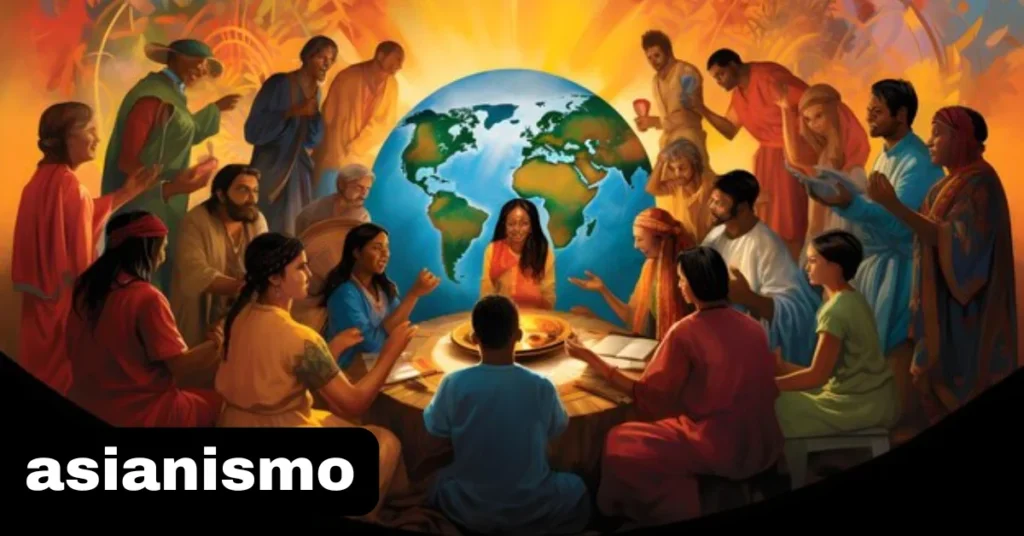Introduction to Asianismo
Asianismo is more than just a concept; it’s a rich tapestry woven from the diverse cultures, philosophies, and traditions of Asia. In an age where globalization often threatens to dilute individual identities, Asianismo stands as a beacon of unity. This movement seeks to celebrate the unique qualities that each nation brings while fostering understanding and respect among them.
As we embark on this exploration of Asianismo, we’ll dive into its history, core principles, and contemporary relevance. Expect to uncover how this philosophy influences art, literature, music, and even social dynamics today. Join us on this journey to discover how Asianismo not only connects people across borders but also nurtures a shared vision for the future.
The History of Asianismo
Asianismo emerged in the late 19th and early 20th centuries as a response to colonialism and Western imperialism. Intellectuals across Asia sought to reclaim their cultural identities. They began advocating for unity among Asian nations, emphasizing shared histories and philosophies.
The movement gained momentum through various literary and artistic expressions. Key figures like Rabindranath Tagore from India and Sun Yat-sen from China played pivotal roles in articulating its vision. Their works highlighted the importance of collaboration among diverse cultures.
As modernity swept across the continent, Asianismo adapted to reflect contemporary issues while maintaining its core values. The philosophy emphasized harmony, respect for traditions, and collective strength against external pressures.
Throughout history, this ideology fostered a sense of solidarity that transcended borders, shaping political movements aimed at independence and self-determination within countries grappling with foreign domination.
Key Principles and Values
Asianismo emphasizes the interconnectedness of cultures. It celebrates diversity while promoting unity among nations. This philosophy encourages respect for different traditions and beliefs.
Central to Asianismo is harmony. It advocates balance within societies and between individuals. By fostering understanding, it seeks to bridge gaps that often divide people.
Another key principle is mutual respect. Acknowledging others’ perspectives creates a foundation for dialogue. This leads to more profound interactions across cultural boundaries.
Collective well-being also plays a crucial role in Asianismo’s values. The focus shifts from individual achievement to community progress, highlighting the importance of collaboration.
Sustainability is woven into its fabric. An awareness of our impact on the environment aligns with many Asian philosophies, encouraging practices that protect nature for future generations.
The Influence of Asianismo in Modern Society
Asianismo has carved a unique niche in modern society, blending diverse cultural philosophies. Its principles resonate across various fields, from education to business practices.
In the workplace, Asianismo encourages collaboration and harmony. Companies often embrace these ideals, fostering environments where teamwork thrives. This shift enhances productivity and employee satisfaction.
Artistic expression is another area significantly influenced by Asianismo. Artists draw inspiration from its rich traditions, creating works that reflect unity and shared human experiences. These pieces challenge viewers to appreciate different perspectives.
Moreover, social movements have adopted Asianismo’s values of peace and understanding. Activists leverage its teachings to promote intercultural dialogue, aiming for positive change in communities worldwide.
Through technology and globalization, the reach of Asianismo expands further than ever before. As societies intertwine more closely through digital platforms, this philosophy serves as a bridge connecting diverse cultures globally.
Examples of Asianismo in Art, Literature, and Music
Asianismo finds rich expressions in various artistic realms. In literature, authors like Rabindranath Tagore and Ryūnosuke Akutagawa explore themes of identity and cultural fusion. Their works capture the essence of Asian thought, weaving together narratives that resonate globally.
Visual arts also reflect this philosophy. Artists such as Yayoi Kusama utilize patterns and colors to symbolize interconnectedness among cultures. Her installations invite viewers into a shared experience, transcending boundaries.
Music is another vibrant example. The blending of traditional instruments with modern genres creates innovative sounds that embody Asianismo’s spirit. Musicians collaborate across borders, fusing styles from classical Indian ragas to contemporary pop beats.
These examples reveal how Asianismo manifests creatively, fostering dialogue between diverse traditions while celebrating unity through art’s universal language.
How Asianismo Promotes Unity and Understanding among Cultures
Asianismo acts as a bridge, connecting diverse cultures through shared philosophies and values. By emphasizing mutual respect, it fosters dialogue among nations.
Through its teachings, people learn the importance of empathy. This understanding helps to dissolve barriers that often lead to misunderstandings and conflict. When individuals engage with Asianismo principles, they embrace a broader worldview.
Cultural exchanges flourish under this philosophy. Festivals celebrating different traditions bring communities together, showcasing unique customs while highlighting commonalities.
Artistic collaborations between artists from various backgrounds further illustrate this unity. Music blends styles; literature intertwines narratives, enriching the global cultural tapestry.
By promoting awareness of one another’s heritage, Asianismo encourages societies to appreciate diversity more deeply than ever before.
Challenges Faced by the Spread of Asianismo and How to Overcome Them
The spread of Asianismo faces notable challenges. Misunderstandings about its principles can lead to resistance. Some view it as a mere cultural appropriation rather than a genuine exchange.
Language barriers often hinder communication and appreciation between cultures. Without effective dialogue, profound ideas can get lost in translation.
Political tensions among Asian nations complicate the promotion of unity. Nationalism sometimes overshadows shared philosophies that could foster collaboration.
Education plays a crucial role here. By incorporating Asianismo into curricula, we can raise awareness and understanding from an early age.
Cultural exchanges are vital too. Festivals, workshops, and art exhibitions serve as platforms for interaction and learning.
Building inclusive communities where diverse perspectives are celebrated is essential for overcoming these hurdles. When people engage openly with one another’s traditions, they pave the way toward deeper connections.
Conclusion: The Future of Asianismo in a Globalized World
The future of Asianismo in a globalized world holds immense potential. As cultures blend and interact more than ever before, the principles of Asianismo can serve as a guiding light for harmony and understanding. As countries become increasingly interconnected through technology and trade, fostering appreciation for diverse traditions becomes vital.
Asianismo encourages open dialogue among nations, promoting respect for different philosophies. This is essential in overcoming cultural misunderstandings that often lead to conflict. The values inherent in Asianismo—compassion, unity, and balance—can help bridge gaps between people from varying backgrounds.
Moreover, the rise of social media allows ideas related to Asianismo to spread rapidly across borders. These platforms enable individuals to share experiences that highlight commonalities rather than differences. Artistic expressions infused with these principles have already begun reshaping narratives within literature and music worldwide.
As we look ahead, it’s clear that embracing Asianismo could contribute positively to global peace efforts. By prioritizing cooperation over competition, societies can cultivate an environment where mutual respect thrives.
In this ever-evolving landscape of globalization, let us remain mindful of the rich tapestry woven by our shared human experience—one where Asianismo stands at the forefront of cultural unity and philosophical exchange.
FAQs
What is Asianismo?
Asianismo is a philosophy celebrating the unity and diversity of Asian cultures, emphasizing cultural revival and mutual respect among nations.
How did Asianismo’s originate?
Asianismo’s emerged in the late 19th and early 20th centuries as a response to colonialism, advocating for cultural unity and collaboration across Asia.
What are the core principles of Asianismo’s?
Key principles include cultural interconnectedness, harmony, mutual respect, collective well-being, and sustainability.
How does Asianismo’s influence modern society?
It influences workplaces, artistic expression, and social movements by promoting collaboration, cultural appreciation, and intercultural dialogue.
What challenges does Asianismo’s face today?
Challenges include misunderstandings, language barriers, and political tensions, which can hinder its spread and impact.







